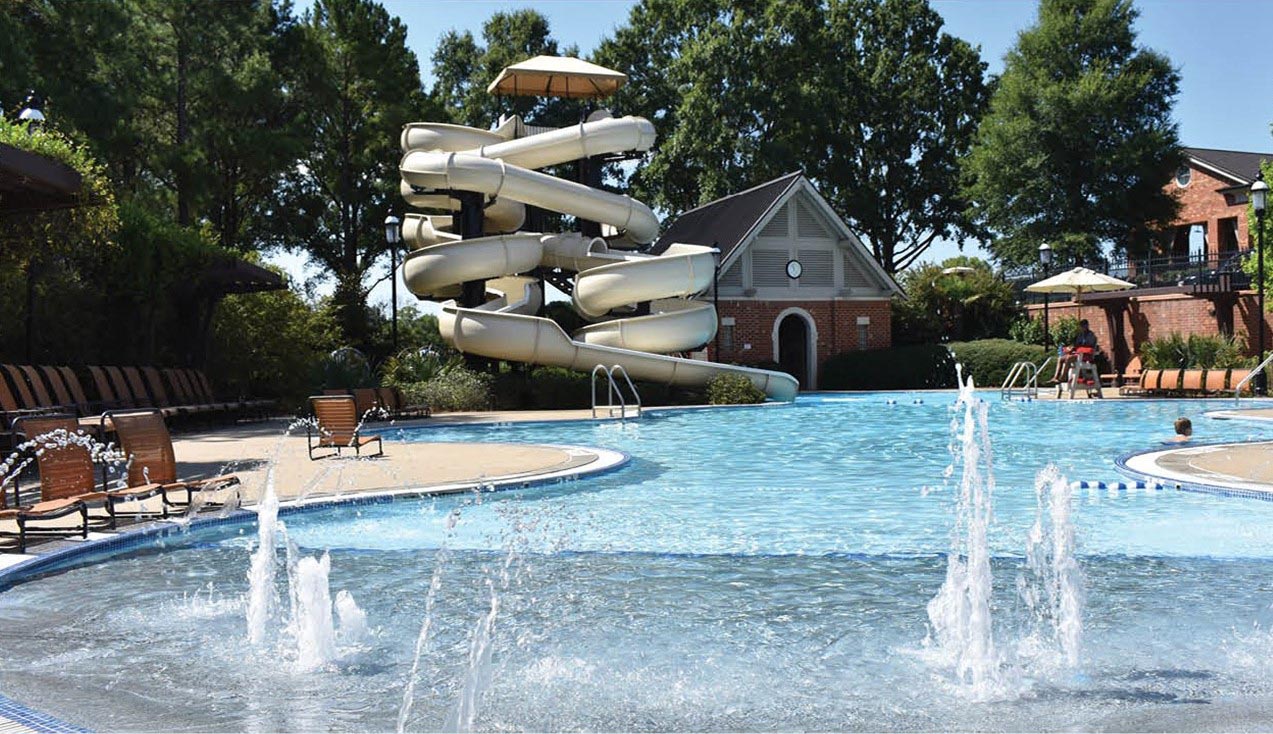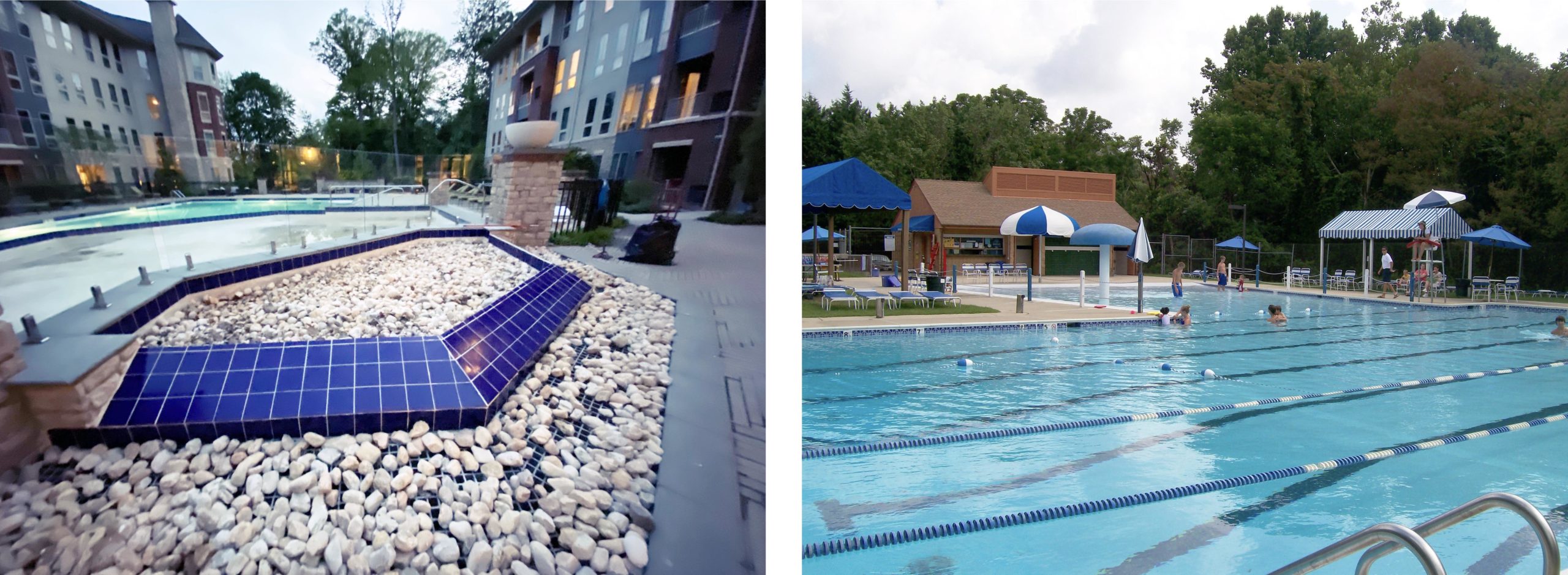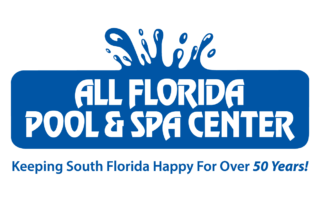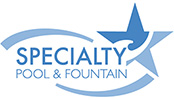Renovation & Repair
Every pool is beautiful to us, but depending on age and construction it may be time to restore or enhance its visual appeal. Modern swimming pool finishes, lighting, and filtration systems will rejuvenate your community’s favorite amenity for years to come. Our commercial renovation experts are here to help you maximize the value of your community’s pool.
If your swimming pool challenges go beyond the aesthetic, our knowledgeable renovation and repair experts are available to you to find the most practical solutions. Our professional team looks below the surface to identify the source of swimming pool problems and failures through our systematic inspection programs. Client education is an important part of our process so that you and your stakeholders can make informed decisions and develop the smartest plan possible for your facility, your community, and your budget.
No job is too big or too small. Dive in with us and make your facility one your patrons remember (for the right reasons).

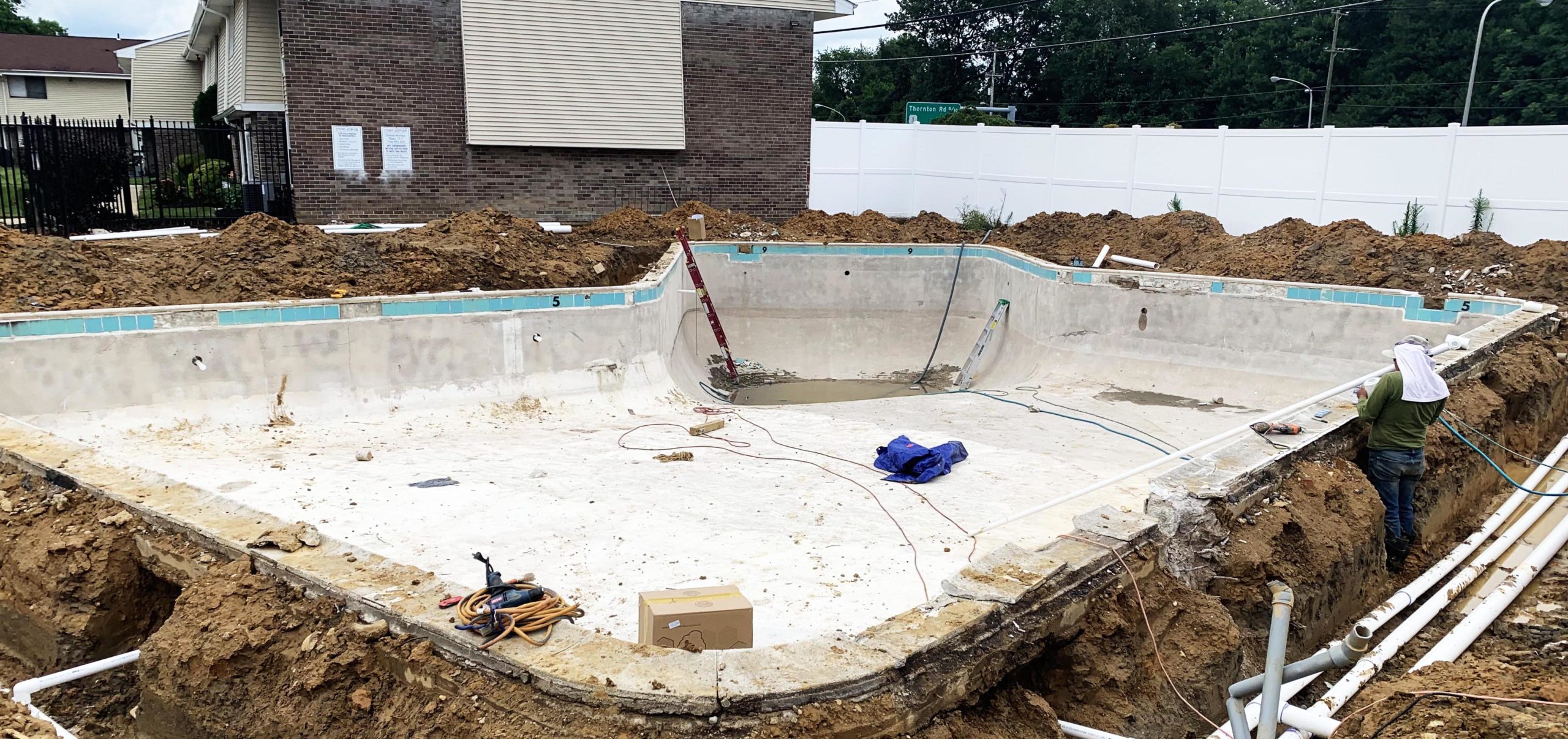
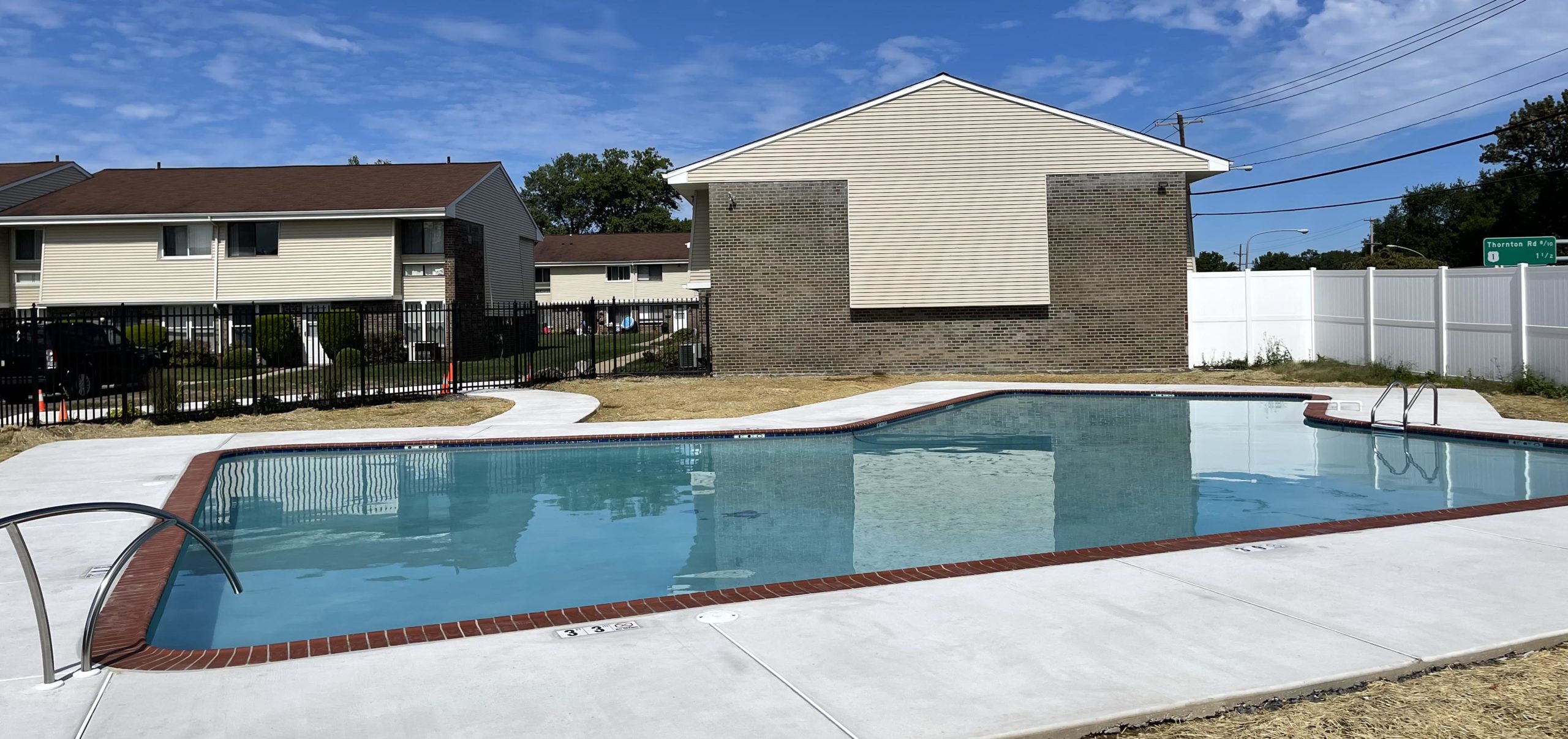
Learn more about our comprehensive renovation and repair services:
There’s no substitute for pristine water in your pool. Issues with filtration and sanitation often manifest in the form of cloudy or dull pool water. Water that isn’t filtered or treated properly can result in hazardous swimming conditions and significant liability. Our trained experts will inspect your existing filtration system, checking for health department compliance and failing equipment. Every pool can have crystal clear, sparkling water when a well-designed filter system is employed and maintained.
- Filter systems are designed to remove debris suspended in the water by pushing it through a filtering media and trapping the material before the water returns to the pool.
- There are three basic kinds of filter systems for swimming pools: cartridge, sand, and diatomaceous earth (DE ).
- A cartridge filter is much like a coffee filter. Made of corrugated paper or polyester cloth, a cartridge filter can be removed and cleaned with a hose. Cartridge filters must be replaced when they become worn or damaged. Expect cartridges to be replaced every other year on a seasonal commercial pool and every year for a pool in operation all 12 months. It’s a good practice to have a backup set of cartridges available for when it’s time to clean the operating set.
- Sand filters trap the debris inside one or more filter tanks as water works its way through the sand contained in the vessel. Gravity pulls the water down through the sand, and fine debris is trapped in the sand bed. The filtered water then exits the tank and travels back to the pool through the return inlets. Backwashing is a process that must be performed 1-2 times weekly in most cases to clear the debris from the tanks. Sand filters should have their sand replaced every 4-5 years to maintain function.
- DE filters depend on the usage of diatomaceous earth (DE), which is made of ground fossilized remains of sea organisms called diatoms. In this system, filter grids are covered with a fabric septum and then coated with DE. The water flows through the DE and through the septum on the grids, where debris is trapped. DE is particularly good at trapping very fine debris.
Filter Manifolds are the piping and valves that direct the water to the filters and back to the pool. Valves that are leaking or difficult to operate should be replaced. There are several gauges that need to be maintained to provide the pool operator with the information they need to manage the system. Flow meters are required so that the operator can ensure the pool is meeting the turnover rate required by the health authority.
Chemical Feeders
Chemical feeders inject sanitizers or pH adjusting chemicals into the water through the filter system’s return line. There are several types of chemical feeders; they can be operated manually or through an automated system.
- Peristaltic Pumps feed liquid chemicals from a storage vat into the pool return line.
- Erosion feeders dissolve chemicals in a tablet form such as trichlor or bromine and introduce them into the pool water over an extended period. These feeders need to be refilled as the tablets are depleted.
- Salt Chlorine Generators use salt that has been added to the pool water to generate chlorine. There are no storage tanks needed but the salt levels in the pool need to be maintained for the system to operate properly.
- Ozonators do not provide a chemical residual that the health department can monitor so they can’t be used on their own in commercial pools. Ozone is generated and injected in the water where it destroys bacteria before it reverts back to oxygen form.
- A pool pump is driven by the motor, drawing water from the skimmer and main drains in the pool and then pushing it through the filter where debris can be removed. It may also push water through a heater to warm the water. The water is then pushed back into the pool through return lines. Pumps and motors must be sized properly to assure compliance with the health authority and keep the pool looking its best. Our capable technicians perform the necessary calculations and review pump curves to make the best recommendations and assure proper function.
- Pumps can be paired with a motor that is single speed, two speed, or variable speed.
- Single-speed motors are the least energy-efficient because the pump is always running at the same speed and it cannot be adjusted for a facility’s specific needs.
- Two-speed motors are more energy-efficient and offer a high and low-speed option.
- Variable-speed motors offer the greatest energy efficiency and allow the pump to be regulated based on a facility’s specific demands and schedules.
- The motor required is determined by the pool volume and turnover rate needed to meet or exceed code. It’s important to match the horsepower of the pump’s motor to the pump type and flow rate. If a pump’s motor is too powerful, it can cause problems with filtration and result in damage to the filters and heating systems. The filter system must be designed to accommodate the flow that the pump and motor are generating.
- Coping is a term that describes the transition material from the pool deck to the water’s edge. These stones or pavers provide not only a finished look to the top of the pool wall, but also provide a measure of slip prevention. The leading edge of the stone is often designed to be used as a grip by swimmers. Coping should be set to slope away from the pool to keep debris and storm runoff from entering the pool water.
- Depending on your budget and the pool’s construction, American Pool can offer many options in coping stones, including precast, natural stone, tile, brick, and aluminum. Edges can be a rolled-edge, which is practical and safe for swimmers, or a bull-nosed, rough cut, or cantilevered. Both options offer their own advantages and aesthetic.
- Coping is almost always performed in conjunction with the replacement of the tile line for both visual and practical reasons. All loose and decayed material must be removed so that the new stones adhere properly and remain bonded for many years to come.
- Waterline tile is more than just a “pretty face” for your pool, it also plays an important role in maintaining a healthy, clean facility. A well-maintained tile line resists the accumulation of oils and debris allowing the pool’s skimmer system to be more effective. When a scum line does appear on the tile it is much easier to clean than a more porous surface like cement.
- The local health authority may require specific information on the tile line to inform patrons of pool depth and diving rules so a knowledgeable contractor is essential when it comes to pool tile replacement.
- There have never been more options available for swimming pool tile. Ceramic, stone, or glass tile are available in every color and design imaginable. Of course, some tiles are more expensive than others so let our renovation experts offer you the tile you love at a price that fits your budget.
- Not every tile is suitable for swimming pool use. Swimming pool tiles should be waterproof, double glazed, and protected against ultraviolet (UV) rays. In colder climates, the tile should also be frost-proof.
- Pool chemistry, proper winterization, and grout maintenance all play a role in the longevity of a tile line. It makes sense to keep up on tile maintenance to get the most out of your investment. Of course, there will come a time when full replacement is more cost-effective than the larger repairs needed as a tile line has reached a certain age or condition.
The pool surface is essentially the “skin” that covers the pool structure beneath the tile line. The ideal surface is smooth, but not slippery and durable enough to withstand submersion and chemicals. The most common surfaces for a commercial swimming pool are plaster, paint, tile or a PVC membrane. Stainless steel pools are often left unfinished for a modern look. Health departments tend to favor finishes in lighter colors so that debris and algae are easy to spot and clean up. All pool surfaces have their pros and cons and our renovation team can help you find the right option for your pool resurfacing project.
- Plaster materials are semi-permeable membranes which are not watertight. This allows small amounts of moisture to slowly permeate through these coatings. Plaster finishes are more durable for everyday wear and tear than most other finishes.
- Replastering can be the most effective way to ensure that the pool’s finish is sustained for an extended period. A plaster finish with good care will last 8-10 years vs. 1-2 years for pool paint.
- There are many alternatives to white plaster (which is made of marble dust and white cement). Including new aggregate materials that are much harder, creating a stronger, more durable finish. Additives like quartz, pebble, and glass beads, can extend the life of a pool’s surface by as much as 10 to 15 years if the water chemistry is properly maintained and the pool is covered postseason. Be sure to inquire about mosaic tile inlays for plaster finishes. This is another great way to increase the visual appeal of your renovation project.
Painting offers a seamless smooth finish to a pool and comes in a variety of colors. Pool paint is available in acrylic (water-based) epoxy or rubber based versions and good preparation is critical to a project’s success. Wading pools and steps require an aggregate to be added to prevent the areas from being too slippery.
- Acrylic pool paint will likely need to be reapplied every 2-3 years.
- Epoxy based paints are a mixture of resin and hardener. They can be applied over unpainted surfaces or previous epoxy. With proper application and maintenance these paints can last up to 10 years.
- Weather is a factor in scheduling pool painting. The pool shell must be completely dry for five consecutive days before application. After painting, the coating may need two to five days to properly dry and cure before the pool can be refilled.
Water blasting for surface removal is not to be confused with pressure washing. The equipment operates up to 40,000 psi while creating less dust than sandblasting processes used in the past.
- Our pool professionals will drain the pool and allow it to dry. All metal, glass, and plastic surfaces like ladders, lights, drains, skimmers and drain covers will be removed or protected for the duration of the water blasting project. The residual debris will be removed and the pool will be washed carefully before applying resurfacing products.
- Paint Removal – To transition a pool with a painted finish to accept a plaster surface, it is necessary to remove all layers of paint so that the new pool finish will adhere properly. Our water blasters remove all previous layers of failing paint exposing the pool’s gunite shell for the next step in your renovation project.
- Plaster Removal – Water blasting can do more than just remove paint, it can demolish layers of failed pool plaster. Existing swimming pool plaster finishes with many layers, extensive cracking or hollow areas should be removed to assure the application of a new pool surface is successful. Plaster surface removal is labor-intensive as there is a large amount of cementitious material that needs to be disposed of in the course of the job.
- Fiberglass Removal – When a fiberglass surface fails, removal is required before a new surface can be applied. Water blasting is the preferred method to complete the job.
The swimming pool bond beam is the top portion of the gunite, shotcrete, or concrete structure in which the pool coping sits and waterline tile is secured. The bond beams tie horizontal steel with the vertical steel which runs down the walls to the floor of the pool to create a durable structure.
- When water freezes and thaws, it can put pressure on the pool’s bond beam. As a result, the beam can be cracked or compromised, causing the structure of the pool to be weakened over time.
- If you notice cracked or popped tiles below the pool’s coping or below the tile band it may indicate damage to the bond beam. Long, horizontal cracks in the tile is another symptom of a cracked bond beam.
- Repairing a compromised bond beam is a complex process and requires a professional pool contractor.
- First, the pool contractor will remove loose or cracked coping and tile, break out the decayed sections of the beam and remove all of the debris.
- Once all of the decayed material is removed, new rebar is tied to the existing structure and depending on the amount of damage, new concrete is poured or gunite is shot to replace the decayed material.
- Once the new bond beam has cured, new tile, coping, and caulk are installed to complete the job.
Swimming pool decks provide a non-skid surface that surrounds the pool. A well-constructed pool deck is sloped away from the pool to keep rainwater from picking up dirt and other debris and running into the pool. It might be tempting to save a few dollars by contracting a concrete or paver company directly, but the pool environment has unique demands and challenges and a knowledgeable pool professional will keep your renovation on track. A professional pool contractor’s attention assures that everything is up to code and that deck equipment is properly installed. Mistakes made in pool decking can be expensive to correct so it’s important to do the job correctly the first time.
- Our professional renovation team provides clients with many options in decking materials. Pavers, poured concrete, tile, stone, and wood are the most common pool deck materials with colors and designs to meet your property’s specific needs. Non-skid information tiles that display pool depth and other safety messages can be embedded for the cleanest look possible.
- Bonding & Grounding – An important safety feature and code item is the bonding and grounding of all metal fixtures in the pool. Our renovation teams will utilize a licensed affiliate to install and test existing and new connections. This aspect of the job protects bathers and pool staff from electrocution due to stray voltage or electrical storms. Depending on your location, a formal certificate may need to be provided to confirm the job has been performed properly.
- Skimmer Systems – Most modern swimming pools use a skimmer system to clean the surface of the pool water. The skimmer bodies are set in the concrete and tied in the pool structure in a specific way to protect them from damage as the pool moves or settles in the ground. Skimmers are typically replaced in conjunction with the pool deck, but may also be replaced independently if the need arises.
Removal, replacement or new installation of these aquatic facility features require specific code and construction knowledge. Depending on your budget, our experts can help you make the right decision when it comes to maintaining or enhancing your pool’s appeal. Adding features to an existing pool may result in changes to existing lifeguard rotations as these active areas require increased supervision.
- Slides can be added to existing facilities or built into any plan. They can be curved, straight, or designed to look like naturally occurring rock slides.
- If you are planning to add a slide, keep in mind that it will need to empty into water that is deep enough to accommodate the size of the slide itself. This depth may be dictated by local regulations.
- Pool slides use water to keep the surface wet and easy to slide down, therefore a water source is required as part of the installation.
- You’ll also want to accommodate for space around the feature to allow an area for guests to congregate, especially in a community pool.
- Diving Boards – Installation or replacement of a diving board will require consideration for minimum depths and landing areas dictated by local regulations.
- Generally, a pool must be at least seven feet, six inches deep to safely install a diving board. However, it is highly recommended that the pool be even deeper than this standard. The length of the diving board itself is determined by the depth of the water where the diving board will be installed.
- In community pools, lifeguards should be assigned to areas of the pool with diving boards. Also, young swimmers should pass a swimming test before being allowed in the deep end or to jump or dive from a diving board.
A pool can develop a leak for many reasons such as winter damage, equipment failure, facility age and type of construction. A poorly maintained pool can lose thousands of gallons per day and hundreds of thousands throughout the pool season. Leaks in a swimming pool should never be ignored because they not only waste water and chemicals, they make the pool itself more prone to movement and structural damage. Our leak detection and repair experts consult with pool owners to identify the source of a leak and provide the most effective solutions to preserve the integrity of your pool for many years to come.
- Effective leak detection requires a well-ordered process.
- Consultation – A discussion with the pool operator or pool owner is essential in getting the basic information needed about the pool’s history and details about how much water is being lost daily. This background information provides our leak detection experts with clues on where to focus their attention.
- Inspection – A visual inspection provides more background information about the pool in its current state. This inspection will also help to fill in any details or gaps from the initial consultation.
- Observation – Several non-invasive tests can be performed in cooperation with the pool owner or facility manager. Static Tests, Bucket Tests, and Dye tests help identify leak sources not related to underground plumbing.
- Pressure Testing – The testing of underground plumbing requires a pressure test. Individual pool lines are put under pressure and observed for a specific time. Loss or maintenance of pressure is noted as this may indicate which line or lines are leaking. Listening devices, Cameras and Helium testing devices may also be employed to identify leak locations.
- Repair – After testing is completed, our experts provide a detailed report and make recommendations for the most effective repair. If the solution requires extensive work, short term approaches may allow a client to get through the season so they can do the major repair after the pool season. Leak repair is best executed immediately after the pool season so that there is plenty of time to address any unforeseeable challenges.
Swimming Pools and decks are large rigid structures that employ expansion joints to help prevent the development of cracks. Expansion joints allow sections of the pool or deck to adjust to movement and stresses that may occur seasonally or as a result of hydrostatic conditions. If the existing caulk is split, cracked, or pulling away, we can replace it. Our pool professionals will carefully remove the old caulk and clean and tape the joint before reapplying the sealant.
- In pool expansion, joints must be maintained to prevent the pool from leaking. Swimming Pools with plaster finishes will require tiling on both sides of the joint to provide a finished edge for the caulking to adhere to.
- Deck expansion joints are found behind the pool coping, around skimmers and at intervals throughout the pool deck. These areas should be caulked to keep water from penetrating beneath these surface structures. Excessive water beneath the pool deck and behind the pool wall creates voids, corrodes embedded steel and promotes decay of the concrete.
Extend your pool season with the installation of a pool heater or heat pump. Natural gas, propane, heat pumps, electric, and even solar heating systems are all available to keep your pool temperature comfortable. There are code, safety, and efficiency considerations when selecting and installing a pool heater. A trained professional will help you make the right choice and provide a smooth installation process.
- Gas Heaters – A gas heater is the most effective way to boost your pool temperature at the start and end of the pool season. Natural gas or propane is burned in a combustion chamber. Propane requires a fuel tank, which must be refilled when empty. Gas heaters typically cost a great deal less than heat-pump filters on installation, but they are less efficient, which may result in greater utility costs over time.
- Heat Pumps – A heat pump doesn’t heat the water as quickly as a gas heater, but works to sustain comfortable bathing over a long time. This electrical appliance uses a condenser system to extract heat from circulating air and transfers it to the pool. A heat pump should work effectively as long as air temperatures remain above 50 degrees Fahrenheit. They are more expensive to install initially but operate at a lower utility cost.
- Solar-powered heaters convert sunlight into energy. The pool’s pump circulates water through the heating elements and a timer is set so that the heater operates only during daylight hours. Because the heater needs sunlight to run, cloudy or stormy weather can reduce its effectiveness.
A properly installed safety cover acts as an important safety feature by preventing children and animals from accidentally entering the water if they access the pool area outside of the operating season. Pool covers can also keep debris like falling leaves from entering the pool, which is particularly important during the fall and winter months to prevent staining. Pool covers come in standard sizes but are most often custom made for commercial clients. Measuring for a pool cover and making notes on any features such as raised walls, waterfalls, slides are an important aspect of the job. Our technicians have been trained in all facets of pool cover installation and work closely with the manufacturer to assure excellent fit and function.
- Mesh Safety Covers can be ordered in several grades and colors. The mesh material allows rainwater to pass through but blocks leaves and other materials from entering the water. These covers are anchored to the pool deck and help make an off-season pool area maintain a tidy appearance.
- Solid Pool Covers are appropriate for smaller pools blocking water and sunlight from penetrating their structure. They require more off-season maintenance to keep water from accumulating on top of the cover and typically use a small electric pump to remove surface water. These covers are very effective in arresting the growth of algae in the off-season when a pool is not circulating.
- Automatic Pool Covers are typically installed as part of a pool’s initial construction. Retrofitting a pool for an automatic cover is possible but not always cost-effective. An automatic pool cover runs on a track system incorporated into the pool wall and can be opened and closed at the push of a button.
Ozonators sanitize by introducing ozone into the pool or spa water. This process boosts the effectiveness of chlorine and other sanitation chemicals. There are two types of ozonators, UV, and CD.
- UV ozonators use ultraviolet light to make ozone
- CD ozonators use corona discharge similar to the electricity in a thunderstorm to create ozone.
Ozone is introduced into one of the pool pipes via a tube from the ozone generator, mixing the ozone with the pool water. The ozone oxidizes the water, increasing the effectiveness of sanitizing chemicals.
Automation of many swimming pool operations is possible. Automation can increase efficiency and support the pool operator in many daily functions. New products hit the market at a dizzying pace and our professional technicians keep up on the latest trends through area trade shows, industry relationships, and trade publications.
- Automation features can be controlled from touch panels in the pool house or even by using a smartphone.
- Chemical automation devices test the water for imbalances and add or slow the addition of chemicals as necessary. Automating the monitoring of the pH balance and sanitizer levels can help reduce the cost of supplies, maintenance, and repairs.
- Cleaning automation can be as variable as a robot vacuum that is placed in the pool at all times and set on a specific cleaning schedule. More elaborate automated cleaning systems include cleaning heads that supply water jets to the pool surface, moving debris to a containment drain for emptying.
- Pumps equipped with variable speed drives can be programmed to slow at off-peak hours to save energy or speed up to accommodate high usage.
- Actuated valves are capable of executing backwashing and other operations at the touch of a button or on a programmed schedule.
- Pool lighting functions can be programmed to come on at night and rotate through a sequence of colors or intensity.
- Splash pads allow guests to interact with water features on safe non-slip surfaces. They are a great addition for community facilities that cater to families and children creating both visual interest and engagement.
- Water is projected out of a wide range of spouts installed in the ground or along fixtures. The water needs to be sanitized and filtered like pool water.
- Wading pools and pools with zero-depth entries often incorporate splash pad features to engage children and provide a more entertaining experience at the pool.
- LED lights are an energy-saving alternative to incandescent or halogen bulbs. They output the same light with less energy and last much longer.
- LED lighting can be automated and controlled through a phone app. Systems can be programmed to run through a series of color variations running on a schedule.
- If you’re considering in-pool lighting our professional pool technicians can verify the lighting code in your area to ensure it meets the minimum and maximum limits for in-pool lighting.
Since January 13, 2013, all large public pools (greater than 300 linear feet) must be equipped with at least two handicap accessible means of entry. Smaller public pools (less than 300 linear feet) must have at least one handicap accessible entry. For many pools, this means installing a permanent or portable pool lift. These devices are designed to provide accessible entry and exit for guests who have physical limitations. The ADA further requires that handrails be installed at pool stairs, ramped entries, and transfer walls.
- This lift must be positioned where the water level is lower than 48 inches unless the entire pool depth is greater than 48 inches.
- When the lift is in the raised position, it should be located over the deck and at least 16 inches from the edge of the pool. This provides a comfortable distance for the user to transfer from the water to the deck and vice versa.
- The deck surface should not slope by a ratio of more than 1:48. There must be a 36 by 48-inch space on the deck so that a wheelchair can be positioned beside the lift. The lift seat must be positioned so that a child (16 inches) or adult (maximum of 19 inches) can be easily transferred to it. The seat must be a minimum of 16 inches wide, and footrests are required for pool lifts.
- Controls must be available at the deck level and water level, allowing the user to access them from either location. The lift seat should be submerged to a minimum of 16 inches below the water level. Also, the lift should be able to accommodate up to 300 pounds.
- There are many options in ADA compliant lifts including portable units that are battery-powered and lifts that are set in the pool deck through an anchor system.
Every commercial and new construction pool should already comply with VGBA, but a knowledgeable and experienced renovation team is essential to maintaining the Virginia Graeme Baker Safety Act (VGBA) compliance and swimmer safety. The law requires anti-entrapment devices and other safety measures to improve swimmer safety. Anti-entrapment devices include the following:
- Safety vacuum release systems (SVRS)
- Suction limiting vent systems
- Gravity drainage systems
- Automatic pump shut‑off systems
- Drain disablement
- VGBA compliant drain covers
To comply with the law, any of the above systems must meet specific requirements. All public pools that were built on or after January 1, 2010 must have at least two main drains per pump. These drains must meet the requirements of the Virginia Graeme Baker Pool and Spa Safety Act. Existing pools with only one main drain must have an additional entrapment prevention device system from the list above. Pools built before 2010 should bring their drain systems up to current standards on renovation whenever it is feasible.



